
In January 2025, the World Monuments Fund placed “Gaza Historic Urban Fabric, Palestine” on its Watch. The inclusion of the region’s already damaged or imperilled heritage sites — such as Great Omari Mosque, Qasr al-Basha and Souq Al-Qaisariya — was concurrent with the United Nations’ statement that 92 per cent of homes and 69 per cent of all structures in Gaza had been destroyed or damaged during the Israeli military’s bombing campaign over the preceding 15 months, which was triggered by Hamas’s attack on Israel on October 7th, 2023. While it was part of a longer list, one that also included the moon, the WMF’s announcement belatedly put into focus the need to preserve Palestinian architectural identity.
Based in Haifa (with a remote presence in Italy), Palestinian architect Elias Khuri has long worked to restore sites with historic and cultural significance in Arab villages — places including the Khan of al-Wakalah and both the Abul-Awn mosque and the Khan in Jaljulia. At the same time, he has been designing private residences — the remarkable 12 Olive Trees House among them — that propose an ambitious future for Palestinian architecture even under conditions where building anything at all requires great perseverance, as Khuri and Aziza Chaouni discuss in this conversation, which took place over Zoom in January 2025.
An architecture professor at the University of Toronto’s Daniels Faculty of Architecture, Design and Landscape, Chaouni is a renowned practitioner trained as an engineer who has been at the forefront of many projects in the Global South that take an activist approach to preservation and context-specific new builds. Her works in her home country of Morocco alone include the rehabilitation and reactivation of such mid-century modern treasures as the legendary Sidi Harazem Thermal Bath in Fez (with help from the Getty Foundation), the ex novo creation of the Joudour Sahara Cultural Centre in the town of M’hamid El Ghizlane and an anti-seismic earth-brick house prototype, developed after the September 2023 earthquake.
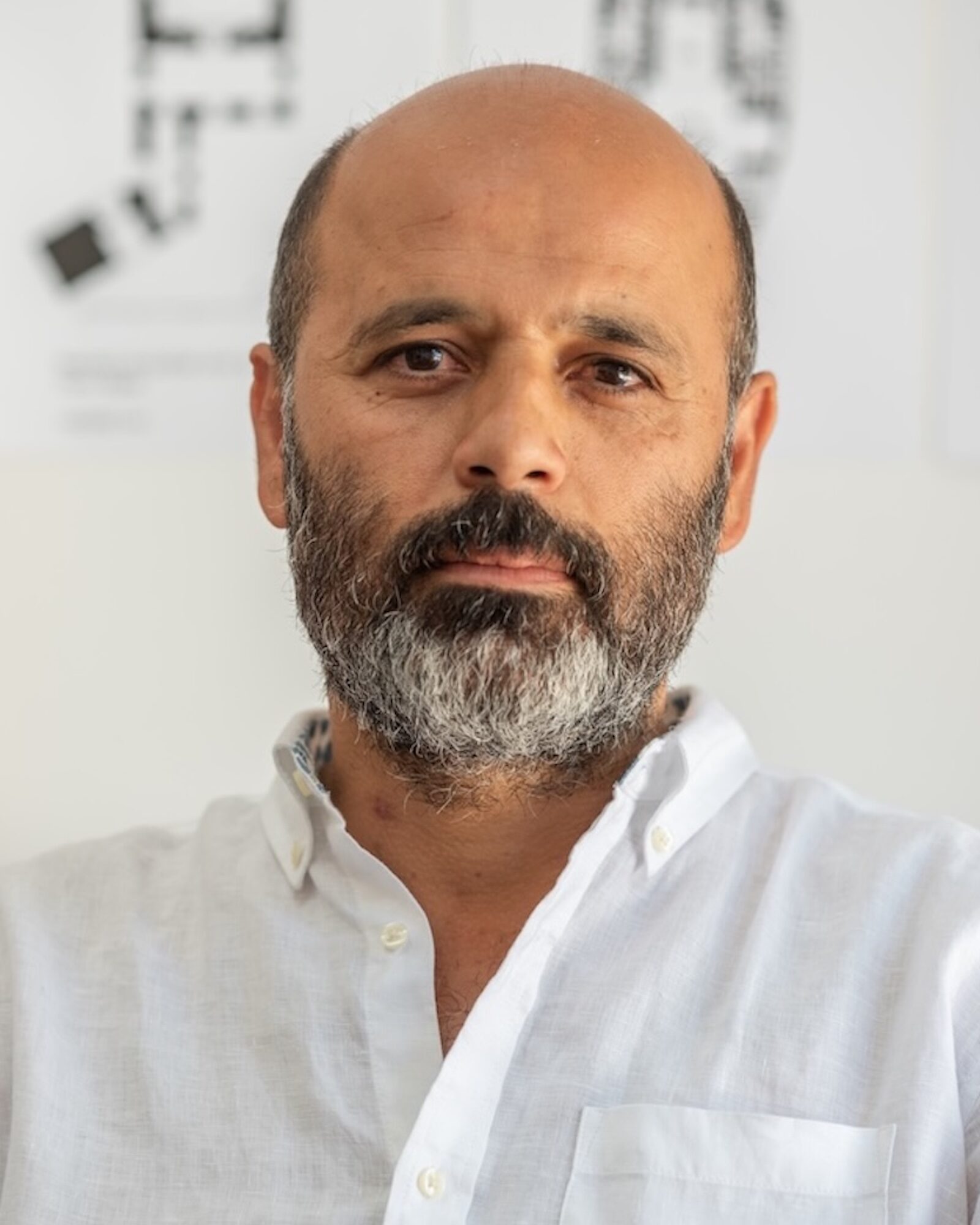
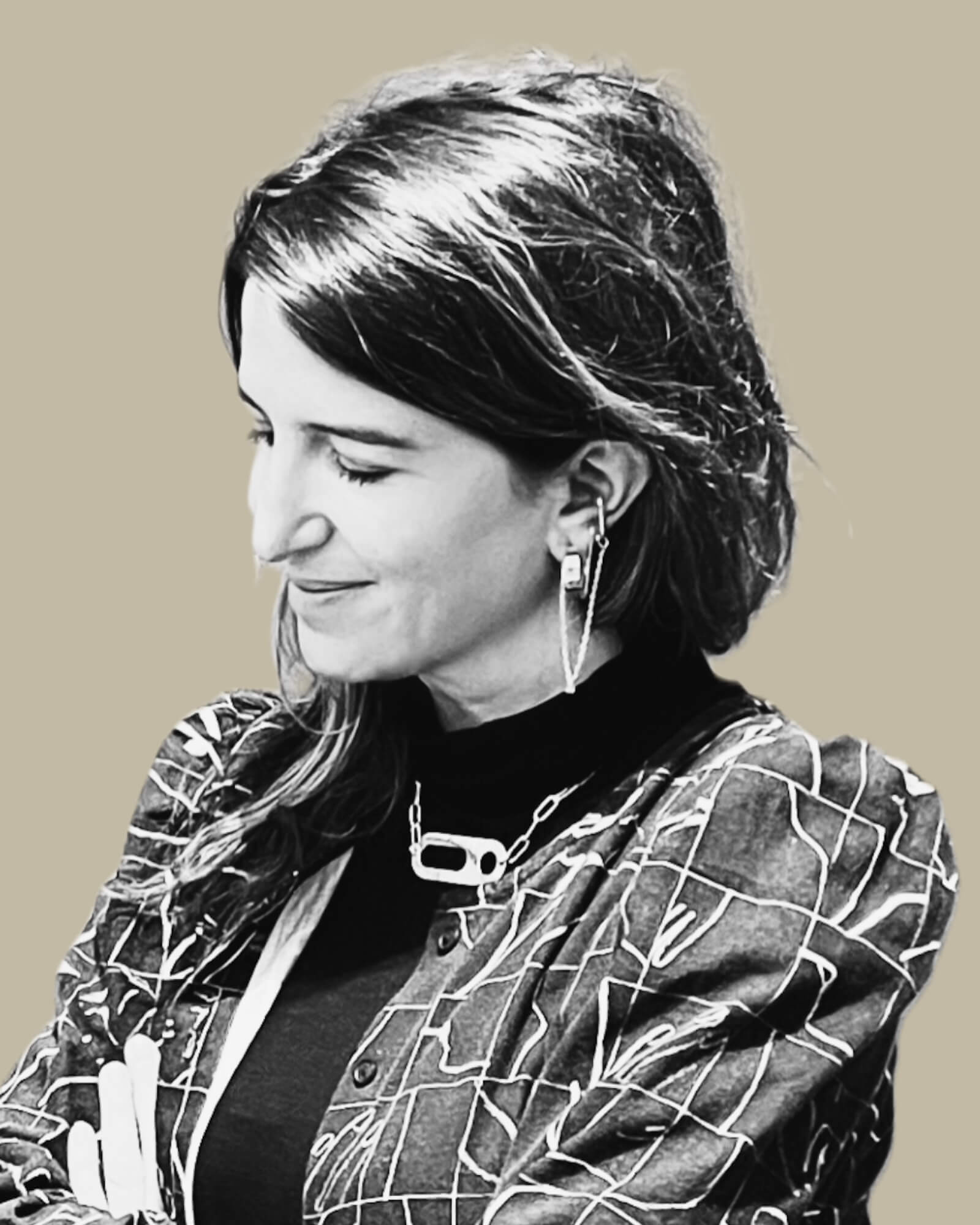
Aziza Chaouni: I want to start by saying that the work you are doing, Elias in rehabilitating and rethinking Palestinian built heritage is extremely important in this very moment, given everything that Gaza has experienced in the past year and a half. Architecture is, in essence, a political act — and we cannot divorce your work from what is currently occurring in the region.
Elias Khuri: Thank you very much. Really, for me, it’s very hard to speak about architecture. [Long pause.] You know, I feel like it’s a kind of crime when I still make architecture, because with architecture, you have to look for beauty. And you feel that you are doing something of a crime when you are seeking beauty with intention in a time of war. Ever since the war began, it has been so hard to concentrate, to make projects. You have to feel like yourself but you cannot. You cannot concentrate. You feel…[in Italian] muto, che non puoi parlare [“mute, as if you cannot speak”]. And we need to be able to speak…
Also, the problem of our culture and of all our Arab architecture is that we are all fragmented. I can’t go to Lebanon, even though it is one hour from me. If you don’t know your culture, you can’t create an architectural identity. I can’t go to Morocco; I can’t go to Syria. I met with one friend in Jordan, who studied architecture in Lebanon, and he was telling me, “Elias, you have to go to the villages of Lebanon to learn how to really make architecture,” but I can’t. I can’t make architecture if I don’t meet the people and don’t know the rest of my architecture. In Palestine, we are fragmented and divided in ethnic villages — since the beginning. When you are divided, you are not entire.
Aziza Chaouni: In this context, one cannot help but question if architecture as a discipline can play a relevant role in a crisis like what Palestine or other places experiencing trauma are encountering.
In the early fall of 2023, I started to teach a seminar on heritage preservation entitled Design for the 99%, in collaboration with Riwaq [a Palestinian not-for-profit that documents and preserves architectural heritage]. We were working on small ruins outside of Jerusalem. After October 7, I couldn’t get in touch with Riwaq for some time. When I was finally able to reach our collaborators there, they were in distress — but they urged us to continue the exercise. Students reached out to the Palestinian diaspora in Canada and abroad to better comprehend and discuss the challenges facing the site and its potential futures. The Riwaq team was present during the final review online and it was a very emotional, touching moment. It was a profound lesson for us all: Even in the darkest of times, we architects can play a humble role.
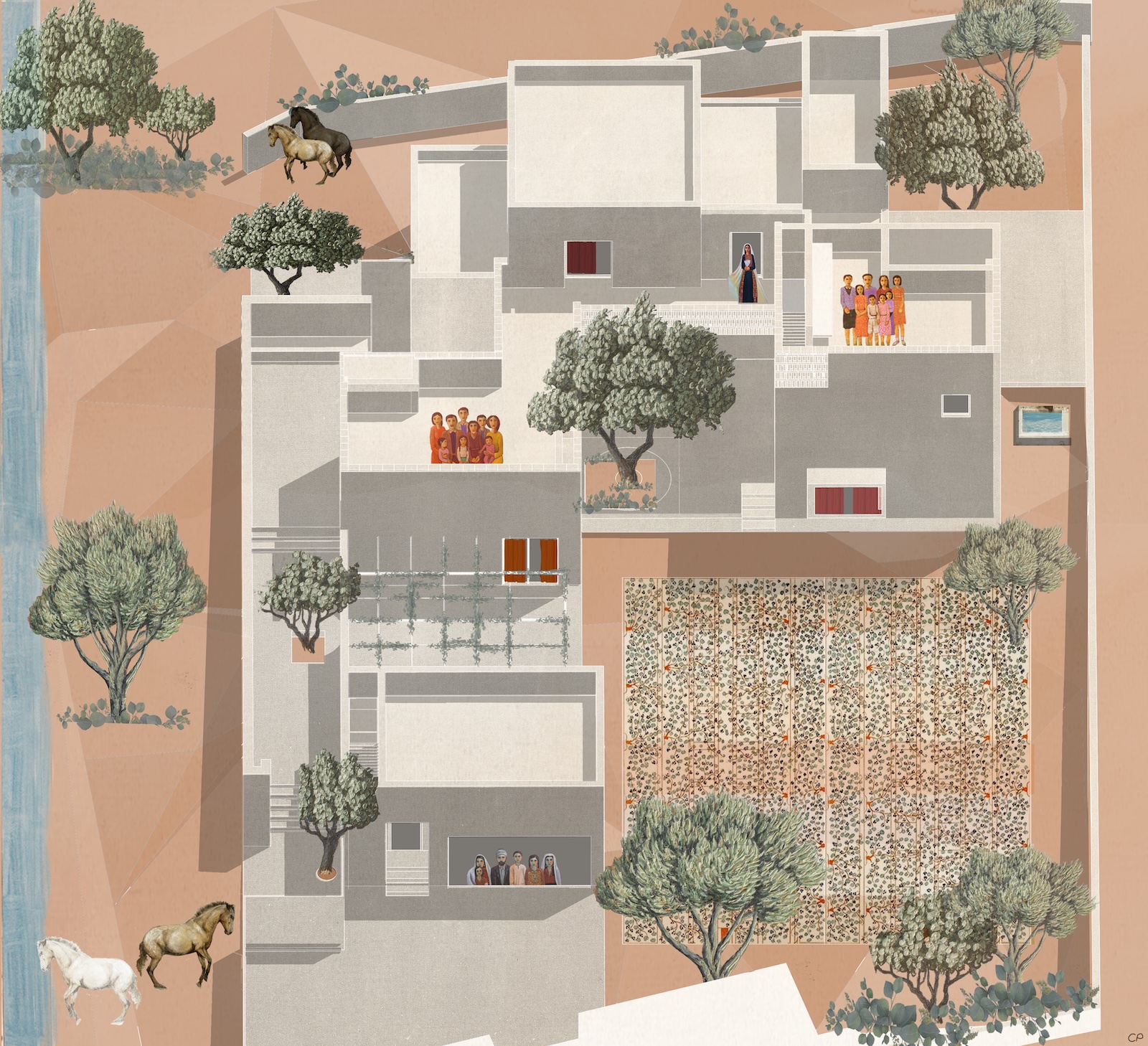
Elias Khuri: I’m d’accordo [“in agreement”] with how they told you to continue. What I understand, what is clear in this period, is that there is nothing clear. This time that we are living through is full of so many radical changes that we don’t know how things will go ahead. But for me, the young students are the best future. They are so different and so clever. The Palestinian people, they know how to move, how to use technology, the media. This whole time, we thought the West would help us, but in the end, we have to help ourselves. So I think we have to fight with small things. For me, I don’t know how to fight except to do architecture and to protect our identity. And not just to protect our identity: When I made the 12 Olive Trees House, I wanted to protect the landscape and the olive trees because there are few left. They were either stolen or they disappeared because we don’t have lands.
Aziza Chaouni: I agree with you about the importance of education. I would like to share with you the al Mashrou’ website, which is the result of research led by architecture students in a course I taught with the historian Jens Hanssen in 2022. The course focused on al Mashrou’, an agrarian utopian village that was developed by Musa Alami, the head of the Arab Development Society in the 1950s and 1960s. The village was visionary in many respects: It aimed at being autonomous in food production, water, energy, education, et cetera…It laid out and tested sustainable design principles beyond the time! This little-known project echoes other utopian rural developments that emerged during the same era around the globe. Hence, documenting what remains of al-Mashrou’ and understanding its legacy can help broaden our architectural discourse and pedagogy.
Elias Khuri: Yes. What interests me in my work is really to build bridges — bridges between architects and also between the Arab world. And especially students. What amazed me was the effect that the 12 Olive Trees House had on students. They felt a true affinity for this architecture because, finally, there was someone speaking of their identity. And it gave them hope that you can still do architecture, and you can build your identity on the site, and you can protect it. And then, also in Jordan, winning first place in the Arab Architects Awards in 2022 gave me the opportunity to meet colleagues from the Arab world. It was really important to dialogue with them. In Palestine, all the middle-class people live in the 48 [the borders that established the State of Israel in 1948]. My parents, all the agricultural people and the poor people are instead tied to the land. So with architecture, it’s harder when you have a fragmented society and you don’t have people with a level of appreciation for architecture.
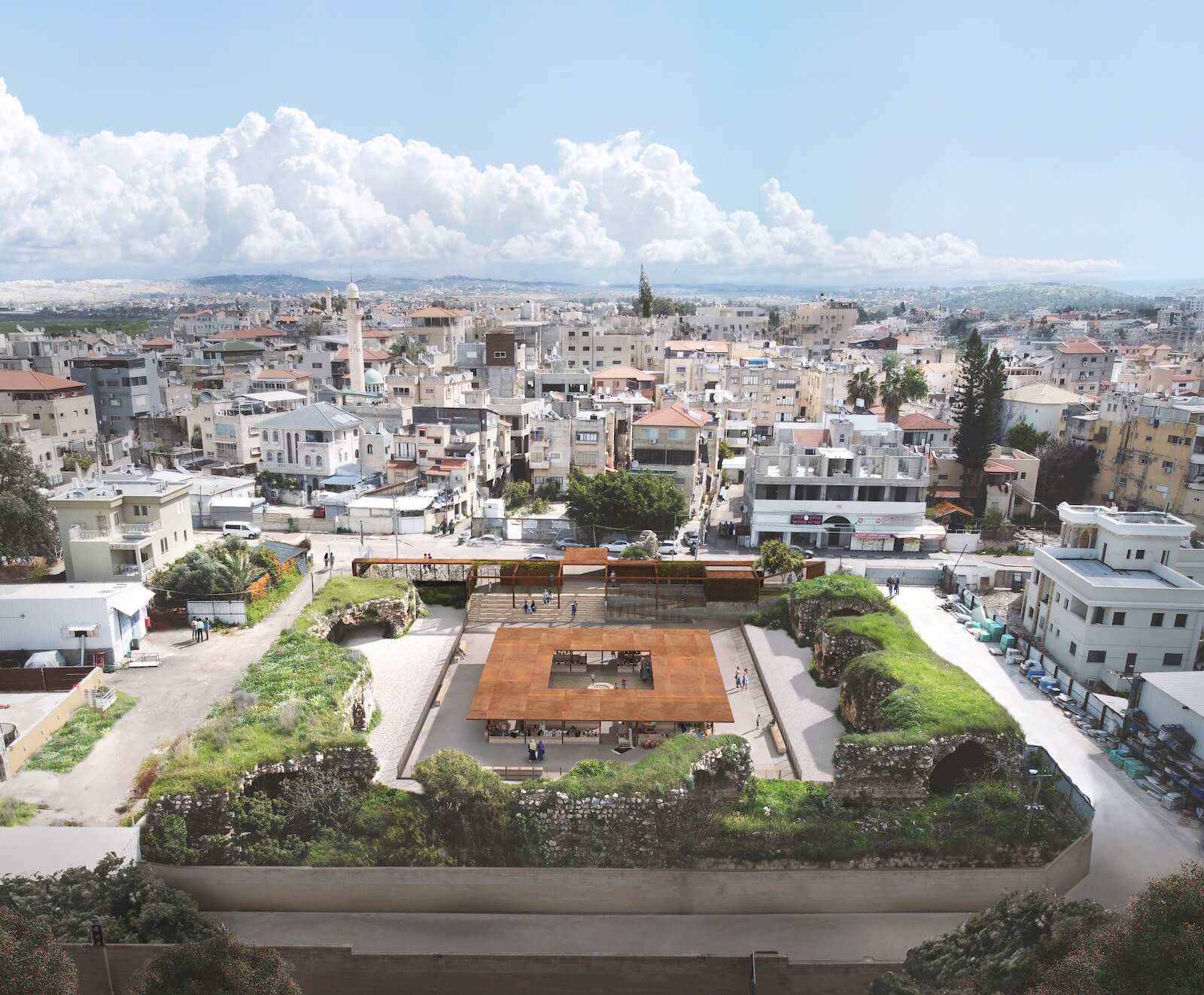
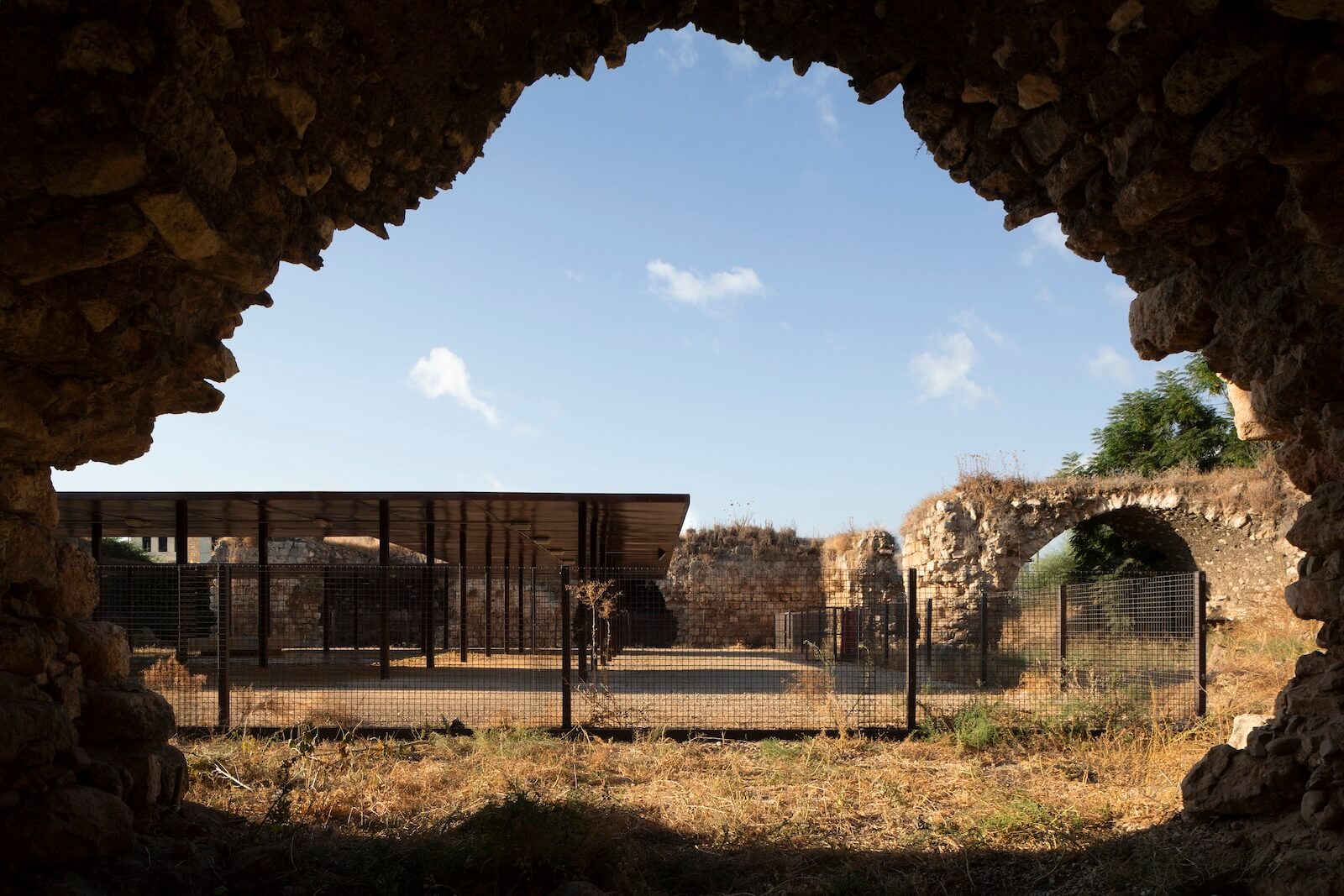
And on the other side, you don’t have the state [support] to make public buildings. I don’t have public buildings. The Khan of Jaljulia — usually, we don’t have this kind of project to preserve in Israel. We didn’t have the money to build it. When they held the competition bid for contractors, nobody came forward because the amount of money to restore the building was nothing. So the municipality told one of the contractors who wanted to do the streets in the village, “If you also make this project for us, I will hire you to make the streets of the village.” So the contractor who carried out the work was specialized in general streetwork for the municipality — not in renovation.
Aziza Chaouni: That’s funny.
Elias Khuri: I make very simple things — very poor, very modest projects — just to give life, to adapt my project to the situation. The works are characterized by simplicity and economy, and implemented at low costs; they reduce waste and re-employ the resources available on the site.
The client, or municipality, had seen the Khan al-Wakalah in Nablus; that’s why they called me to make this project. And the Khan al-Wakalah began from a project I did for Riwaq, a competition for Birzeit, a long time ago. I won the competition with Davide Pagliarini, my colleague from Italy, but they didn’t have the money to do it. And in the competition jury was Giovanni Fontana Antonelli, the head of UNESCO’s office for Palestine. He saw my project, and for him it was such a different kind of thinking about architecture. Ten years passed, and then we met by chance, and he said, “I have this project in Nablus…”
Aziza Chaouni: Few know the difficulty of building in Palestine. To move one bucket of cement, sometimes even one stone, is a quasi-impossible task. The Hebron Rehabilitation Committee has documented the many impediments to building homes and renovating heritage structures in the Old City. The medal of perseverance in architecture needs to go to anyone working on a Palestinian project today.
Your work is heroic in my eyes, Elias: In the most difficult of circumstances, with limited access to materials and skilled labour, you somehow manage to lead and complete poetic architectural projects. You not only preserve Palestinian heritage, but also imbue it with new life and meaning, as exemplified by the Khan projects. I share your approach towards heritage: I see it, too, as an evolving notion, one that is being continuously and organically activated, occupied and reimagined, rather than one frozen in a past that is no more. Your work is a small victory within a heritage landscape in Palestine that has been subject to a long history of erasure and dispossession or has been actively demolished.
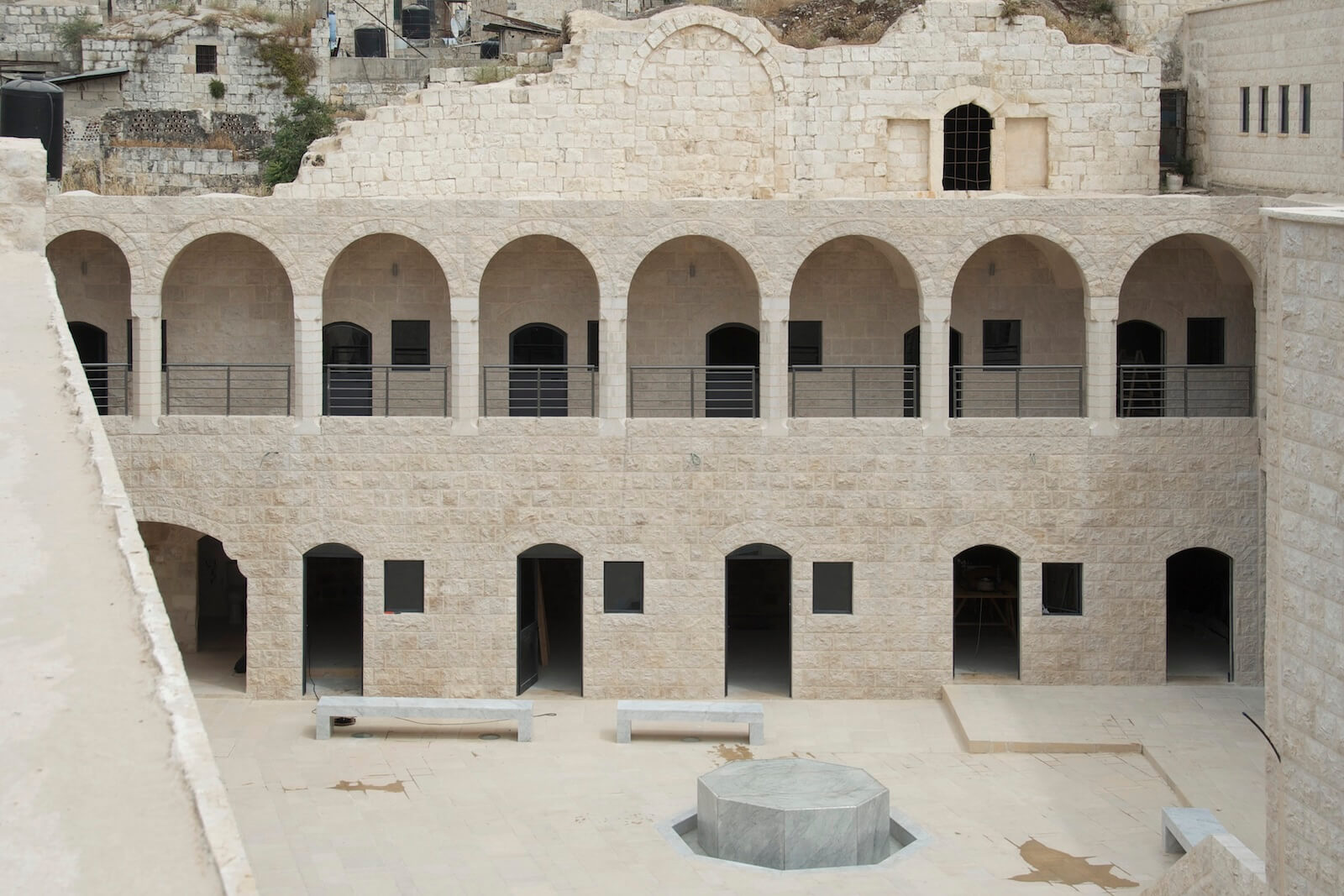
Elias Khuri: You are so kind. We still hope that architecture can bring about change. We are simply fighting to survive and don’t fully understand who we are; we just try to make it through each day without the time or space to reflect and think clearly or constructively. Last summer, I visited Granada, and it was a truly shocking experience for me. The war in Gaza made me reflect on many of the values the West tries to impose on us and how it seeks to control us, particularly in terms of architectural values that often feel foreign to our culture.
I suddenly felt overwhelmed with emotion when I saw the architecture within the Alhambra. It made me realize how much I appreciate Western architecture — I admire figures like [Jørn] Utzon, [Luis] Barragán and Álvaro Siza. But in that moment, I understood that I also deeply value the Arab influences present in their architecture. I suddenly felt like I had lost my way over the years, and I realized I needed to return to my roots, to better understand who we are and where we are headed.
A key part of architecture is having control over the urban environment. As Palestinians, we have never had control over the urban scale or fabric. We can only influence small, limited things. The greatest tool Israel uses is the control of urban space. If you look at the history of Palestine, you can see how everything has been shaped from above with one primary aim: to control the territory.
…But I would like now to speak about your architecture, Aziza!
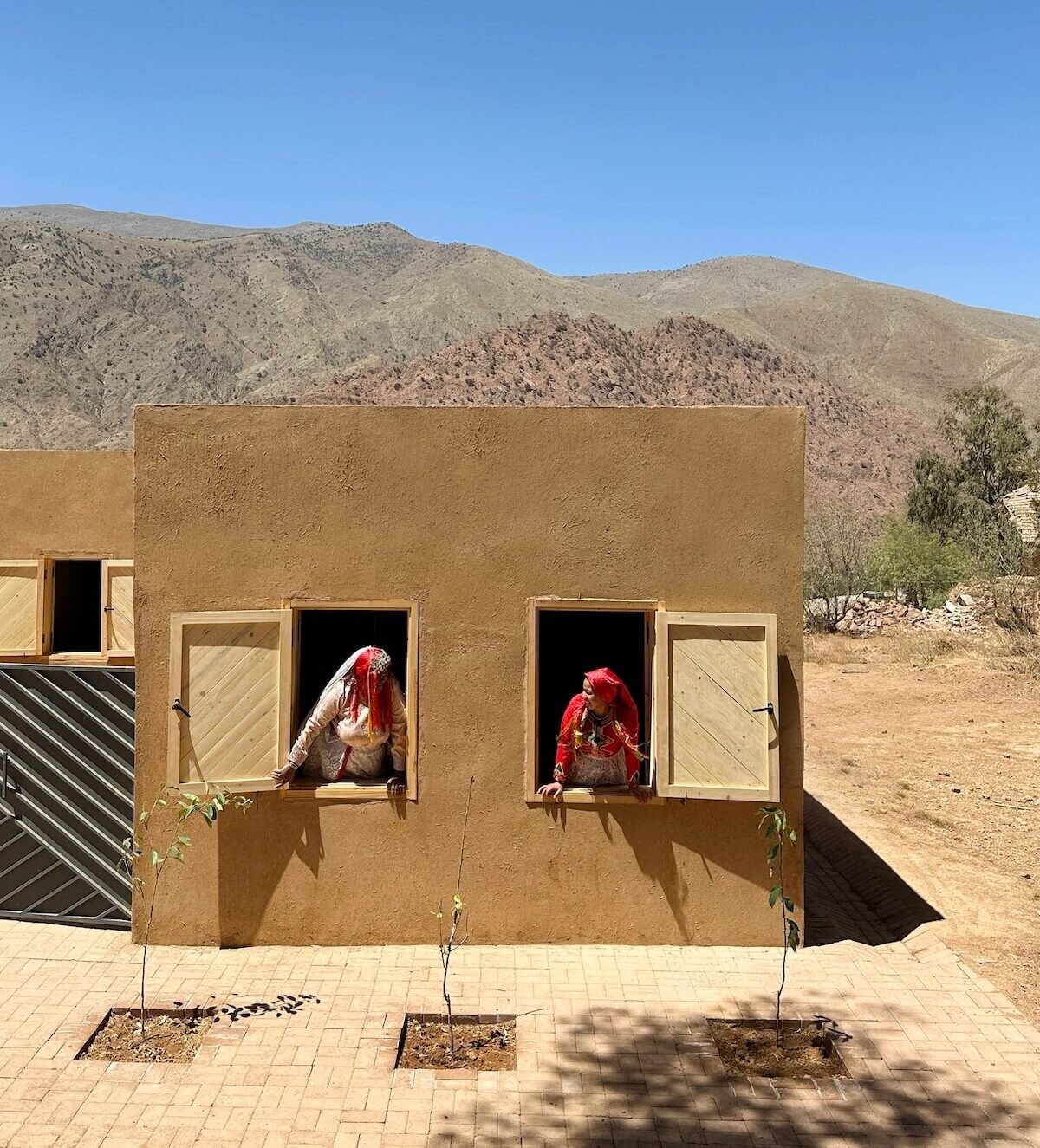
Aziza Chaouni: Yes, sure! But it seems secondary compared to your work. Currently, my main personal challenge is to find a balance between my role as an academic/researcher/educator and as a practitioner. I can best describe myself as an activist architect, deeply committed to connecting with communities and working on the ground with them.
One of my ongoing projects, which I started in 2010, is a music school called Joudour Sahara, located in the small desert oasis of M’hamid El Ghizlane, and I co-established a not-for-profit with a local friend (Halim Sbai) and two other foreign friends to fund it. For the 2,000 kids to take free classes, in dance and music, they are required to be part of an environmental program of tree planting and oasis regeneration, so the environmental aspect is as important as the cultural one. The school buildings use only rammed earth and local materials. The school boasts an outdoor auditorium and an underground water reservoir, which also acts as a classroom that’s naturally ventilated because of the water underneath.
Also in Morocco, I completed a prototype as a volunteer with engineering colleagues for an anti-seismic house made with compressed earth bricks that are composed of 95 per cent earth and five per cent cement: They interlock without mortar so they can be built quickly. These projects exemplify my design approach, which tends to rethink vernacular typologies and construction methods.

Elias Khuri: I feel there are always communities in your work, this feeling of society. You are working with networks and the client is also part of the community. What I want to ask you: This social architecture, this technique you use, do you think we can use it in modern architecture? Do you think it’s possible to change the normal architecture we are doing?
Aziza Chaouni: Yes! And let me tell you why: All the projects that we often see that get awards in our profession, it’s often about their aesthetic or their technical and constructive innovation. But very seldom do the awards value the users’ experience, the socio-economic and environmental impacts of these projects. We never ask users, “Are you happy with this building, do you use it often, are you comfortable inside it, is it answering your daily needs?” In the same vein, we rarely ask people who live near award-winning buildings how they feel about their place within the city. The role and opinion of the user is undervalued — but I think it’s important to hear the voices of the future users of our buildings; it makes our designs richer. Our profession remains, after all, a service industry for a privileged few, since we only build projects for people who can afford to pay us. Our ethical role is to attempt to amplify the voices who have no seat at the decision-making table.
Elias Khuri: Most people don’t have this opportunity to have an architect, also here. But when I am doing projects, I also think about the neighbours. This is what I’m trying to do with the project of my brother. My brother loves me and he gives me the opportunity to make architecture. With the house I am designing for him, I want to change the neighbours — who are always fighting because they don’t have space to build, and then privacy becomes a big problem. I tell them that even with small dimensions, we can go back to the patio — make a modern patio with simple things — and we can protect our privacy; we can use poor materials. I think our problem, as architects, is that we think we need to make architecture with details — “good architecture” that is shown in the media. The nice thing about Arab architecture is it can have no details. So I think the challenge now is to give people the instruments to do that kind of architecture.
Elias Khuri and Aziza Chaouni on Re-envisioning Arab Architecture
While discussing the importance of preserving Arab heritage sites, architects Elias Khuri and Aziza Chaouni also consider how to imagine new possibilities.
